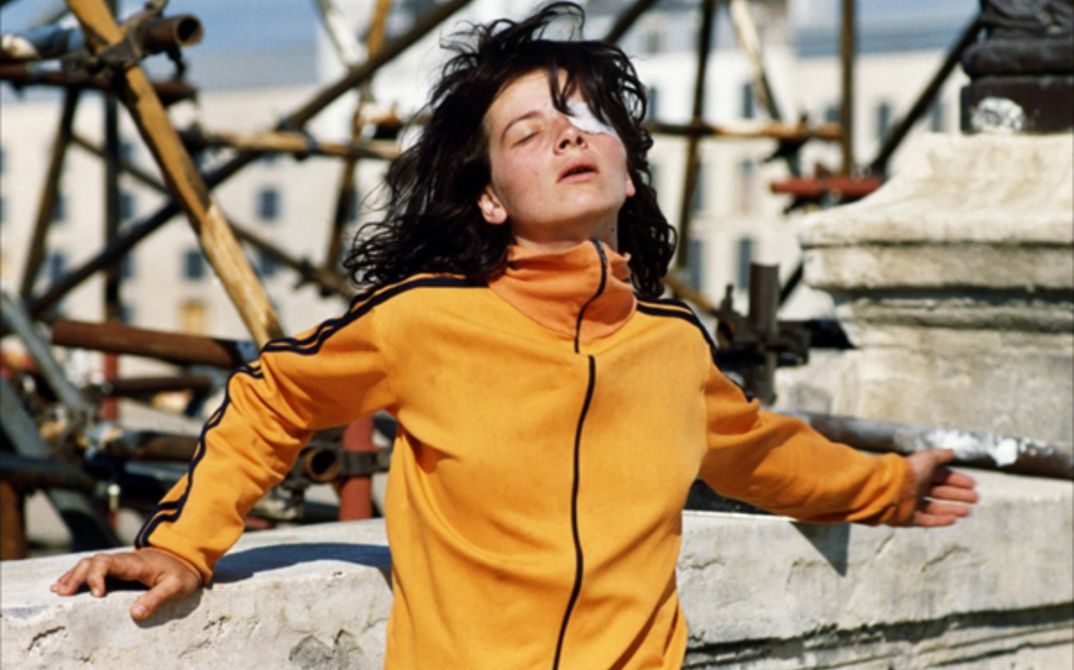Leos Carax (born Alexandre Oscar Dupont in 1960) can justifiably be called an exceptional filmmaker. From erstwhile directorial prodigy of the early 1980s, he has developed into a controversial protagonist of international auteur cinema and retains a special position in French film today. Euphorically celebrated or resolutely rejected, the great legend is surrounded by many legends, not least regarding the sensational story behind the production of LES AMANTS DU PONT-NEUF, when he grossly exceeded both budget and deadline. Carax has only made six feature-length films in about 40 years. His slim oeuvre, however, is exceedingly rich in attractions and obsessions. Excessive in means, radically stylized and of great impact, his films cannot be pinned down to any genre. They burst with visual and acoustic inventions and bear witness to an extraordinary wealth of ideas that does not shy away from overdose and comprises numerous cinephile references and allusions to film history. Carax's great theme is unhappy love and his preferred setting is the city of Paris. Denis Lavant functions as his alter ego, and the characters he embodies bear the filmmaker's first names: Alex and Oscar.
On the occasion of the Berlin premiere of Annette, Leos Carax’s most recent film, Arsenal presents a program of five feature-length films made by him between 1983 and 2012 as part of the Berlin French Film Week.
BOY MEETS GIRL (Leos Carax, F 1983, 27.11.) Both in their early 20s, Alex (Denis Lavant) and Mireille (Mireille Perrier) have been abandoned when they meet each other. He has lost his girlfriend to his best friend – whom he almost strangled as a consequence –, while she was left in the lurch by her lover. Mireille reads and does a tap dance and Alex wanders through the Parisian night in a checked jacket as David Bowie sings "When I Live My Dream". At a party, whose guests are from a cabinet of curiosities, they finally start talking, removed from the world. The young woman with short hair and black sunglasses becomes a Dreyer-esque Joan of Arc. Carax's debut feature film in radiant black and white has the stylized look of the 80s and is full of unusual ideas and bizarre situations that combine to create a romantic but tragic love story about the impossibility of being together.
MAUVAIS SANG (The Night Is Young, Leos Carax, F 1986, 28.11.) Paris, in an unstipulated future: a comet comes dangerously close to Earth, the climate goes crazy, and a mysterious virus infects all human beings who have sex without loving their partner. There is a vaccine that two aging gangsters are hoping to steal from a lab with the help of the skilled magician and ventriloquist Alex (Denis Lavant). He leaves his girlfriend (Julie Delpy) for the job and falls in love with Anna (Juliette Binoche), the young companion of his client (Michel Piccoli) - which results in an ecstatic dance to David Bowie's "Modern Love." An extremely stylized dramaturgy of colors, cinephile allusions (including to Grémillon's La petite Lise, Anna Karina in Godard's Vivre sa vie, and Jean Cocteau), fade to black transitions, and the aesthetics of silent film are just a few of the elements from Carax's rich reserve of ideas.
LES AMANTS DU PONT-NEUF (The Lovers on the Bridge, Leos Carax, F 1991, 29.11., Introduced by: Jérôme d’Estais) Alex (Denis Lavant), a homeless fire breather who lives on the Pont Neuf in the heart of Paris, which is closed for restoration, meets the vagabond painter Michèle (Juliette Binoche) one night. Since she is gradually going blind because of an eye disease, she has abandoned her bourgeois existence and is helplessly exposed on the streets. The bridge becomes a refuge for them both and the site of an amour fou that brings intoxicating moments to their glum existence, such as a madcap water ski session on the Seine illuminated by fireworks to celebrate the 200th anniversary of the French Revolution. Alternating between naturalistic shots and mythical exaggeration, fire and water, light and darkness, and with its breathless montage, this spectacular film is as excessive and unbound as love is capable of being.
POLA X (Leos Carax, F/G/J/CH 1999, 30.11.) The prologue, with wartime newsreels and the Shakespeare quote "Time is out of joint", is followed by an idyllic image: a castle in Normandy. Pierre (Guillaume Depardieu), a young writer, lives there with his mother (Catherine Deneuve), who is incestuously attracted to him. He is about to marry his fiancée when he meets a mysterious woman (Katerina Golubeva) in the forest who claims to be his sister and from a war zone in Eastern Europe. Pierre unexpectedly leaves everything behind and follows her to Paris, where he teeters into poverty, experiences social exclusion and joins an obscure artist-anarchist commune. Carax's film adaptation of Herman Melville's novel "Pierre; or the Ambiguities" (1852) is his most controversial work, a tale of passion rich in metaphor, in which grandeur and failure coexist.
HOLY MOTORS (Leos Carax, F/D 2012, 1.12.) The mysterious Monsieur Oscar (Denis Lavant) is driven all around Paris in a white stretch limousine by his chauffeur (Edith Scob, Georges Franju's erstwhile muse). He is always disguising himself on the back seat because his profession consists in slipping into different roles. He is a man who assumes many identities - including industry boss, hit man, beggar and monster - but has none himself. On the roof of the abandoned "La Samaritaine" department store, with a view of the Pont Neuf and the lights of the city at night, Eva (Kylie Minogue) sings a song of yearning. HOLY MOTORS is a crazy Paris trip, a brilliant rush of images, a deep bow to Denis Lavant - and a film about cinema: from Marey's serial photography to the artificiality of Hollywood studio films to the digital motion capture process. (bik)
With the support of the Institut français, Berlin.

